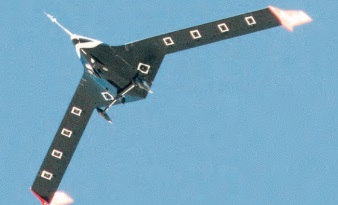Chapter: Hyperelastic Research Lightweight Flexible Aircraft, new invention technology, Research project papers,
X-56A Multi-Utility Technology Testbed (MUTT)

X-56A Multi-Utility
Technology Testbed (MUTT)
Longer and more
flexible wings are considered crucial to the design of future long-range,
fuel-efficient aircraft. Because these wings are more susceptible to flutter
and the stress of atmospheric turbulence,
NASA is investigating key technologies for active flutter
suppression and gust-load alleviation. The goal of the X-56A MUTT project is to
advance aeroservoelastic technology through flight research using a low-cost,
modular remotely piloted experimental aircraft. The aircraft is being tested
using flight profiles where flutter occurs in order to demonstrate that onboard
instrumentation not only can accurately predict and sense the onset of wing
flutter but also can be used by the control system to actively suppress
aeroelastic instabilities.
Work to date: Flight tests in 2013 provided validation of
the flight vehicle systems and paved the way for flights in 2014 to
validate flutter-suppression techniques on highly flexible structures. The
Armstrong team has provided oversight regarding airworthiness and flight safety
as well as operations and range support.
Looking ahead: Goals include: (1)
maturing flutter-suppression technologies, (2) reducing structural
weight to improve fuel efficiency, and (3) increasing aspect ratio by 30 to 40
percent to reduce aerodynamic drag.
Partner: Air Force Flight Research Laboratory
Benefits
Advanced: Enables
construction of longer, lighter, more flexible wings for a variety of
crewed and remotely piloted aircraft
Configurable: Enables a vast array of future
research activities for wing sets, tail sections, sensors, and control surfaces
Applications
Lightweight commercial aircraft
High-altitude surveillance platforms
Hyperelastic Research/Lightweight Flexible Aircraft
Armstrong engineers are pioneering new research in aircraft
design and modeling. Researchers are experimenting with revolutionary
hyperelastic wing control technologies that can reduce weight, improve aircraft
aerodynamic efficiency, and suppress flutter. Other cutting-edge research
involves techniques, models, and analysis tools for flutter suppression and
gust-load allevia-tion.Flight projects at Armstrong rely on high-performance
aircraft that can support research on lightweight structures and advance control
technologies for future efficient, environmentally friendly transport aircraft.
This work has applicability beyond flight safety and design
optimization.Armstrong's R&D capabilities in this area also can be applied
to other vehicles, such as supersonic transports, large space structures, and
hypersonic vehicles.
Related Topics